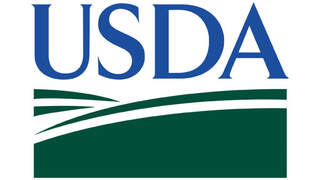
The Amazon Forest is the largest terrestrial ecosystem on Earth, yet the least understood regarding its microbial diversity. The increasing demand for food, fiber, and biofuels has caused a shift in forest to agriculture. This is the largest land use change going on around the world and expected to cause ecosystem level changes that will threaten biodiversity and modify Earth's biogeochemical cycles.
In this research project, we ask the following questions:
(1) What are the bacterial taxa present in the Amazon rainforest soils?
(2) How are microbial communities organized in space and time in tropical systems?
(3) How do functional alterations caused by forest-to-agriculture conversion affect Earth's biogeochemical cycles?
See the following publications:
Mirza and Rodrigues (2012) Applied and Environmental Microbiology
Rodrigues et al. (2013) Proc. National Academy of Sciences of USA
Mirza et al. (2014) Applied and Environmental Microbiology
Muller et al. (2014) The ISME Journal
Paula et al (2014) Molecular Ecololgy
Ranjan et al. (2015) Frontiers in Microbiology
Navarette et al. (2016) Frontiers in Microbiology
Mueller et al. (2016) Functional Ecology
Hamanoui et al. (2016) Applied Soil Ecology
Pylro et al (2016) Trends in Microbiology
Meyer et al. (2017) Molecular Ecology
Kroeger et al. (2018) Frontiers in Microbiology
Khan et al. (2019) FEMS Microbiology Ecology
Mirza et al. (2020) Applied and Environmental Microbiology
Meyer et al. (2020) Environmental International
Kroeger et al. (2021) The ISME Journal
Durrier et al. (2021) Biogeochemistry
Yoshiura et al. (2021) Frontiers in Plant Science
Gontijo et al. (2021) Molecular Ecology
Danielson and Rodrigues (2022) Advances in Agronomy
Venturini et al. (2022) Environmental Research
Souza et al. (2022) Antonie van Leeuvenhoek
Venturini et al. (2022) Microbial Resource Announcements
Obregon et al. (2023) Molecular Ecology
Xu et al. (2024) Global Change Biology
Khan et al. (2024) under review
In this research project, we ask the following questions:
(1) What are the bacterial taxa present in the Amazon rainforest soils?
(2) How are microbial communities organized in space and time in tropical systems?
(3) How do functional alterations caused by forest-to-agriculture conversion affect Earth's biogeochemical cycles?
See the following publications:
Mirza and Rodrigues (2012) Applied and Environmental Microbiology
Rodrigues et al. (2013) Proc. National Academy of Sciences of USA
Mirza et al. (2014) Applied and Environmental Microbiology
Muller et al. (2014) The ISME Journal
Paula et al (2014) Molecular Ecololgy
Ranjan et al. (2015) Frontiers in Microbiology
Navarette et al. (2016) Frontiers in Microbiology
Mueller et al. (2016) Functional Ecology
Hamanoui et al. (2016) Applied Soil Ecology
Pylro et al (2016) Trends in Microbiology
Meyer et al. (2017) Molecular Ecology
Kroeger et al. (2018) Frontiers in Microbiology
Khan et al. (2019) FEMS Microbiology Ecology
Mirza et al. (2020) Applied and Environmental Microbiology
Meyer et al. (2020) Environmental International
Kroeger et al. (2021) The ISME Journal
Durrier et al. (2021) Biogeochemistry
Yoshiura et al. (2021) Frontiers in Plant Science
Gontijo et al. (2021) Molecular Ecology
Danielson and Rodrigues (2022) Advances in Agronomy
Venturini et al. (2022) Environmental Research
Souza et al. (2022) Antonie van Leeuvenhoek
Venturini et al. (2022) Microbial Resource Announcements
Obregon et al. (2023) Molecular Ecology
Xu et al. (2024) Global Change Biology
Khan et al. (2024) under review

Wood-feeding termites are model bioconverters, harboring an entire microbial community orchestrated to transform cellulose, hemicellulose and lignin into soluble oligosaccharides, H2, and methane, among other intermediates of interest for biofuel production. Among the many bacterial species found in the termite hindgut, members of phylum Verrucomicrobia are always observed in molecular surveys of the 16S rRNA gene, but rarely captured in isolation studies. Our laboratory has maintained a small population of Verrucomicrobia isolates and has been using a combination of physiological studies and 'omics tools to understand their ecological attributes and functional roles in the termite gut. We hypothesize that intraspecies variation is as an essential component of ecotypic differences and a stabilizing force in ecosystem resilience. The genomes of the Termite Associated Verrucomicrobia (TAV) strains have been sequenced, whole genome expression profiles have been contrasted and their proteomes measured. In addition, we are interested in identifying whole cell regulatory networks involded in gene expression under low O2 concentration.
See the following publications:
Isanapong et al. (2012) Journal of Bacteriology
Wertz et al. (2012) Applied and Environmental Microbiology
Isanapong et al. (2013) The ISME Journal
Rodrigues and Isanapong (2013) The Prokaryotes
Kotak et al. (2015) Genome Announcements
Kotak et al. (2020) Microbial Resource Announcements
Lin and Rodrigues (2020) Bergey's Manual
See the following publications:
Isanapong et al. (2012) Journal of Bacteriology
Wertz et al. (2012) Applied and Environmental Microbiology
Isanapong et al. (2013) The ISME Journal
Rodrigues and Isanapong (2013) The Prokaryotes
Kotak et al. (2015) Genome Announcements
Kotak et al. (2020) Microbial Resource Announcements
Lin and Rodrigues (2020) Bergey's Manual
Soil health is defined as the capacity for soil to function as a vital living system to sustain biological productivity, maintain environmental quality and promote plant, animal, and human health. Our central hypothesis is that poor soil health resuls in the increase of plant and microbial stresses, similar to human health metrics. Theses stresses can be quantified as biological indicators. We are using metagenomics to identify and quantify genes associated with environmental stresses in agricultural intensive conditions.
Collaborators: Dr. Daniel Geisseler and Dr. Maeli Melotto
See the following publications:
Lazicki et al. (2021) Soil Science Society of America Journal
Lazicki et al. (2022) Applied Soil Ecology
Rodrigues and Melotto (2023) Trends in Microbiology
Collaborators: Dr. Daniel Geisseler and Dr. Maeli Melotto
See the following publications:
Lazicki et al. (2021) Soil Science Society of America Journal
Lazicki et al. (2022) Applied Soil Ecology
Rodrigues and Melotto (2023) Trends in Microbiology
Managed Aquifer Recharge (MAR) has received increased attention as a method of conserving water in Mediterranean climates such as California. The AgMar method captures surface water in agricultural systems, allowing water to infiltrate through soil. We are currently evaluating how AgMar affects microbial communities and processes related to the N cycle. We are particular interested in the processes of nitrification and denitrification that happens when AgMar takes place.
Collaborators: Dr. Helen Dahlke (PI) and Dr. Will Horwath
See the following publications:
Levintal et al. (2022) Science of the Total Environment
Huang et al. (2023) Environmental Science & Technology
Levintal et al. (2024) under review
Collaborators: Dr. Helen Dahlke (PI) and Dr. Will Horwath
See the following publications:
Levintal et al. (2022) Science of the Total Environment
Huang et al. (2023) Environmental Science & Technology
Levintal et al. (2024) under review



